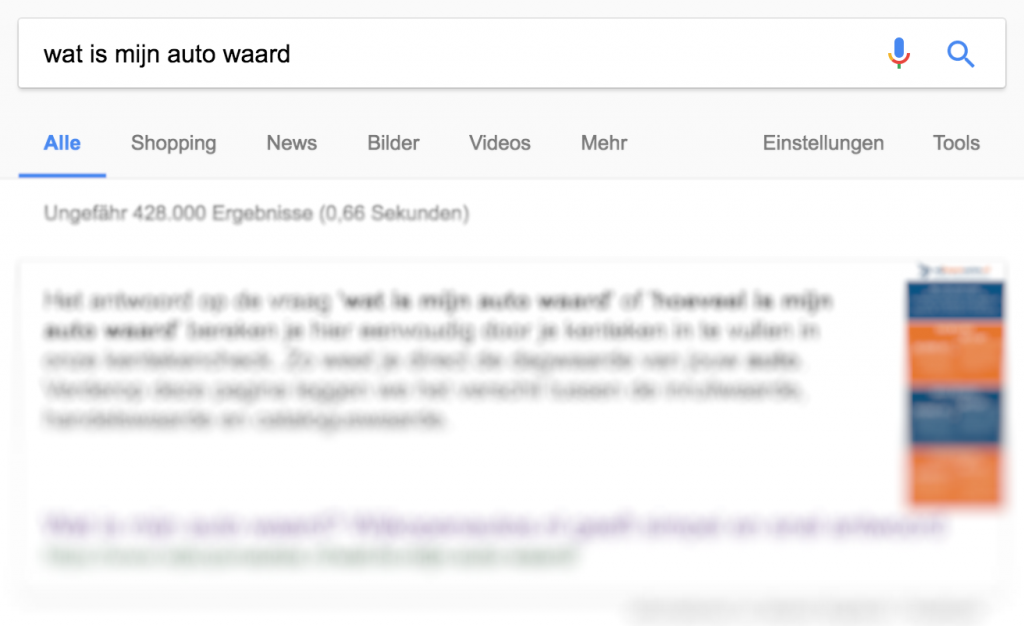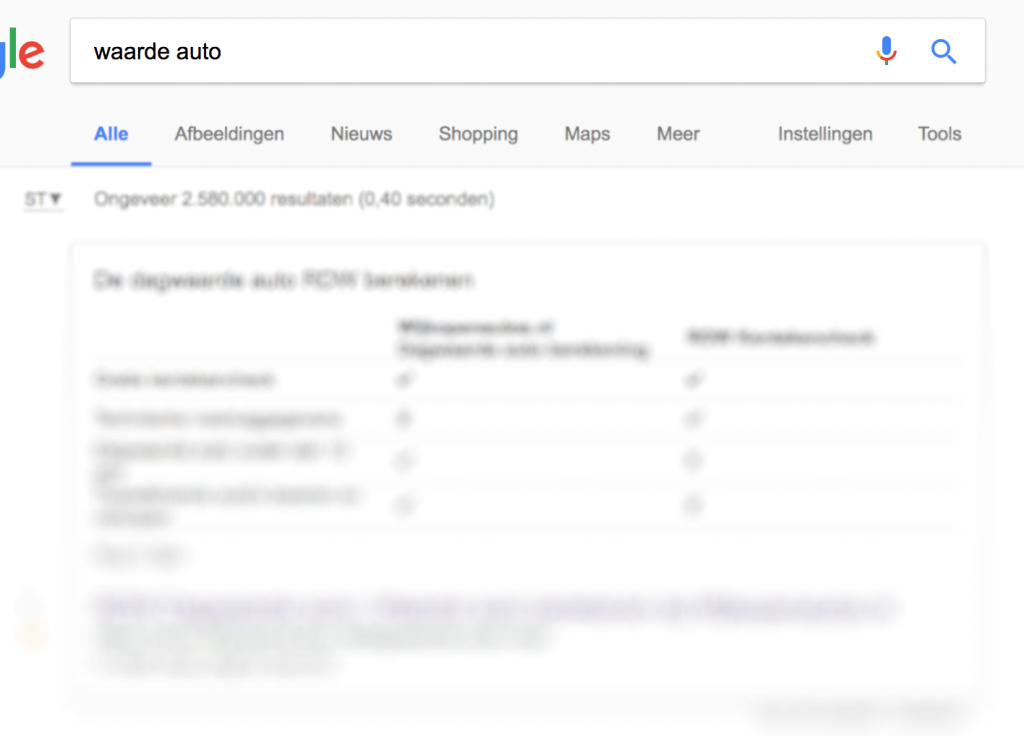Whatever your question is, Google always has an answer. About the weather, sports matches or even what the meaning of Love is.
The Featured Snippets (aka ‘Answer Boxes’) in Google are hot, and best practices are provided all over the web on how to get them. Curious as I am, I wanted to unlock my next achievement in SEO: To provide Google with an answer.
And it worked. For a few Dutch queries on car related topics, I took over the answer box in Google. Initially, the phrase “What is my car worth”, was answered by one of our competitors. Challenge accepted, my goal was clear: Provide a better answer to the question. After doing some research on the topic, I gave it a few shots as well. And there it was! My answer, tailor made for both Google ánd the Google user.

Are we human, or are we SEO?
When I started working in the field of SEO, I realised that probably around 75% of my writing will be read by machines, and scanned by human beings, either on mobile or desktop. As many know, Google is working hard to understand words, concepts and contexts just like humans do, but looking at the Answer Box provided by our competitor, we saw an answer that did not make much sense as a paragraph itself. Therefore, the real challenge for me was helping Google understand a text written for humans. My faith in this particular machine has been rewarded, it worked out. We saw our CTR increase significantly, our bounce rate went down and the page got better overall rankings.
Gotta catch ’em all!
Happy as we were with the first test results, we got hungry for more, the hunt was on. While looking for new answers to give to Google, I dived into our longtail keyword set and added some exact matches in a table to make a richer comparison. The next day, a new Answer Box was born.

It’s a test!
Working in an international company with different countries is a blessing in this case, as the results for the different countries are coming in as well. We started to compare our results to better understand how Featured Snippets are triggered, and in which forms. As there is only one core algorithm serving all the languages, you might say that similar queries in different languages require similar answers. Unfortunately, this isn’t quite true. And since this new Google functionality is quite new and constantly developing, it seems that Google is running quite a few tests simultaneously. Sometimes they appear, and sometimes they don’t. But, based on our test cases, we came up with the following conclusions:
- Variations on queries trigger different boxes. For instance, “How much is my car worth” gives a different answer than “What is my car worth”, but both are highlighted as an exact match on the query.
- The answers between different Google domains (.com, .nl or .de) differ when our competitor claims the box (yes, the fight is still going on). For our page, Google gives only one and the same answer
- In case of a plain text answer, different sentences from over the entire page can be taken instead of a full paragraph
- Google takes the answer that is considered to be the most complete, which doesn’t necessarily mean that it needs an exact match on the keyword in order to be triggered
Box of secrets
For now, I feel these conclusions are only the tip of the iceberg and I still have much more questions that can’t be answered on Google (not yet). Which is exactly what I like about SEO. The constant discovery of an algorithm that is learning as we speak, how to anticipate on its constant development and how to match the right brand with the right user, through the right query.
Comments